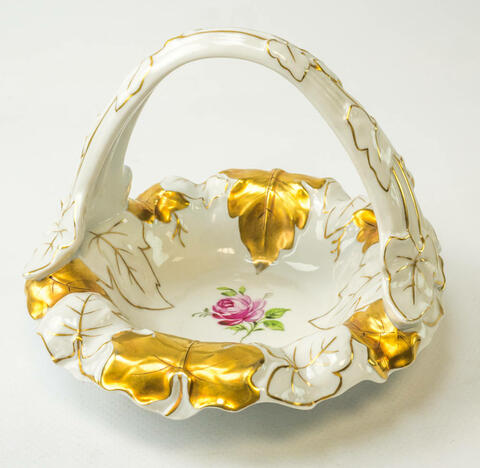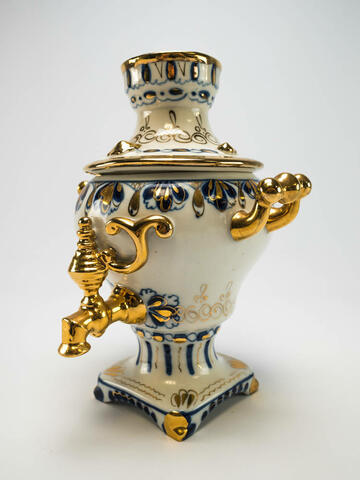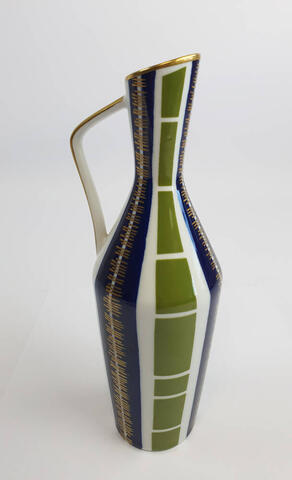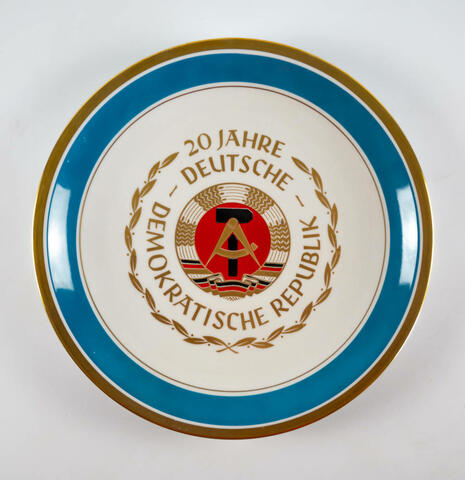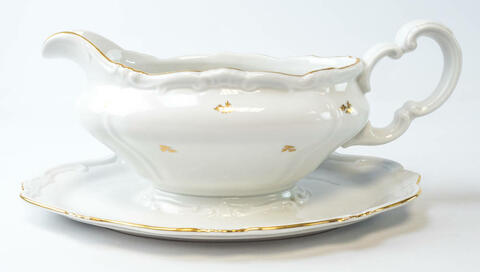From the collection
White gold – porcelain in the GDR
The home of European porcelain is in eastern Germany, more precisely in Meissen, the small district town in Saxony that became world famous for its distinctive crossed blue swords. The unique story begins as early as 1702 with Johann Friedrich Böttger (1982-1719). In 1708, after six years of testing, he succeeded in creating the first white porcelain – the first in the whole of Europe.
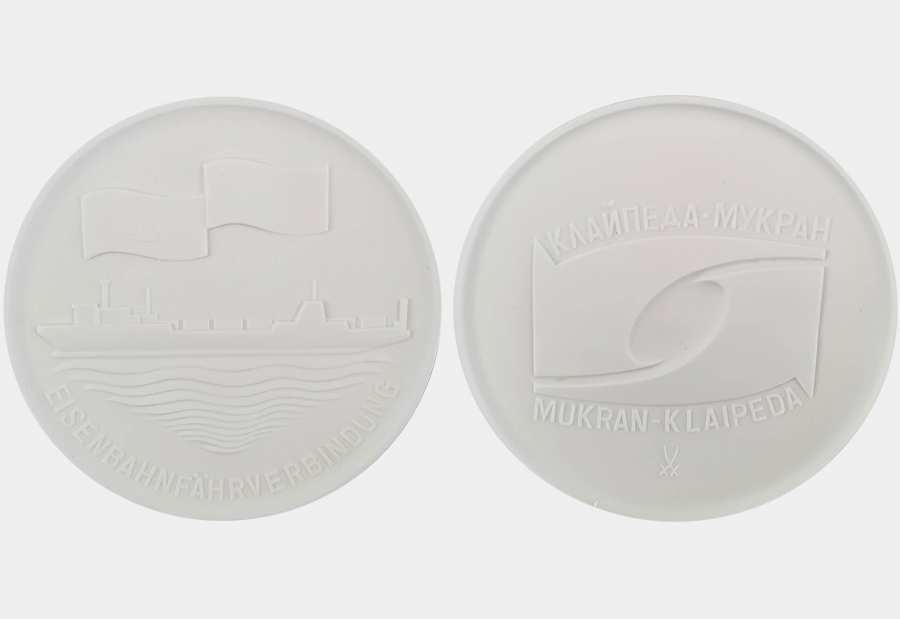
Fig.: Porcelain medal made of Meissen porcelain for the Mukran-Klaipėda ferry connection.
Meissen porcelain
Porcelain continued its triumphal march through the centuries. Even the two world wars were unable to cause lasting damage to the brand. On 8 May 1946, just one year after the end of the war, porcelain from Meissen could once again be admired at the Leipzig Spring Fair. In 1950, the company was returned from Soviet ownership and from then on operated under the name VEB Staatliche Porzellan-Manufaktur Meissen. And with considerable success. At the beginning of the 1950s, the company was already listed among the ten strongest foreign exchange earning companies in the GDR.
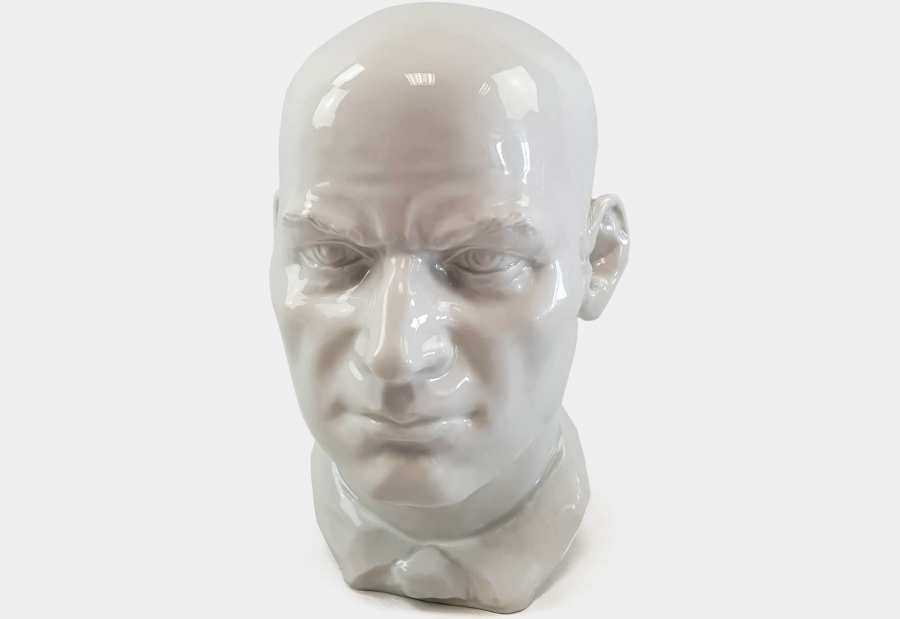
Fig.: The fully sculpted bust of Ernst Thälmann by VEB Staatliche Porzellan-Manufaktur Meissen.
Gifts of honour made from Meissen porcelain
In the 40-year history of the GDR, a large number of museums, cities, municipalities, parties, organisations and companies took advantage of the opportunity to award medals, busts and decorative plates made of Meissen porcelain as (political) gifts of honour to dignitaries or to hand them out for special events, organisations and anniversaries. As a result of this practice, a large number of these objects have been preserved to the present day and are valuable testimonies to their time. A few selected pieces from our collection illustrate this development.
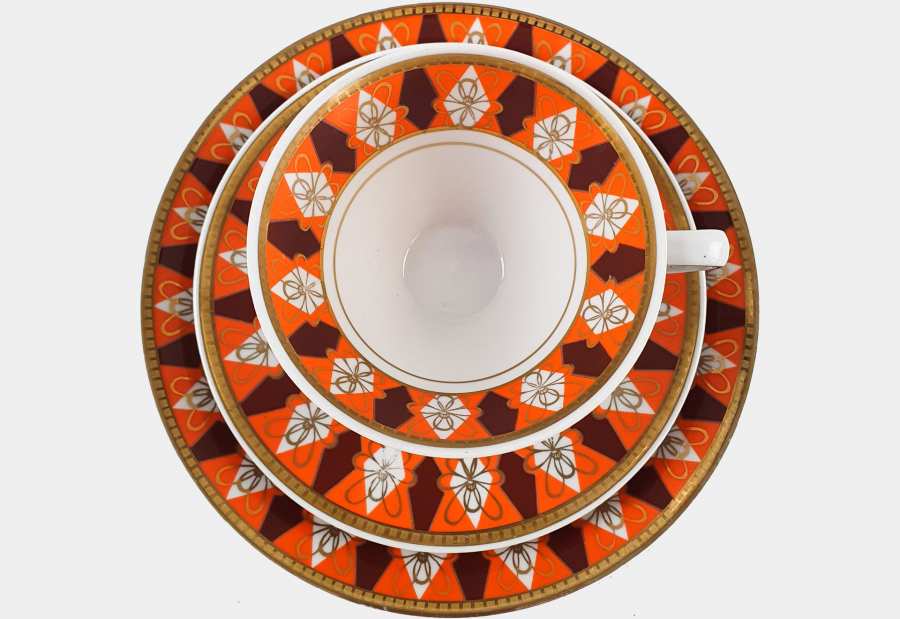
Fig.: Tea service of the VEB Porzellanmanufaktur Plaue.
»The big four« Kahla, Ilmenau, Weimar and Lichte
In addition to the world-famous Meissen, it was above all the Thuringia location that characterised the style of porcelain in the GDR. Over time, several smaller, previously independent factories were integrated into the four large factories in Kahla, Ilmenau, Weimar and Lichte. The companies, which were also transformed into state-owned companies, attempted an aesthetic balancing act between stable sobriety and a cheerful breadth and variety, especially in the form of animal and floral decorations, which were intended to characterise everyday socialist life. The richly decorated, glazed tea services, which impressively illustrate these motifs, are examples of this. Almost all of the large, but also smaller, less well-known porcelain manufacturers had them in their product repertoire. In addition to its visual value, the striking decoration also had another advantage: it made it easier to conceal any production errors.
In addition to the richly coloured decor, mother-of-pearl tableware series were also extremely popular. The coffee service from the state-owned company VEB Feinkeramik Kahla is a striking example of this. The twelve-piece hunting tableware set from VEB Porzellanwerk Lichte, on the other hand, depicts a wide variety of small and large game with great delicacy.
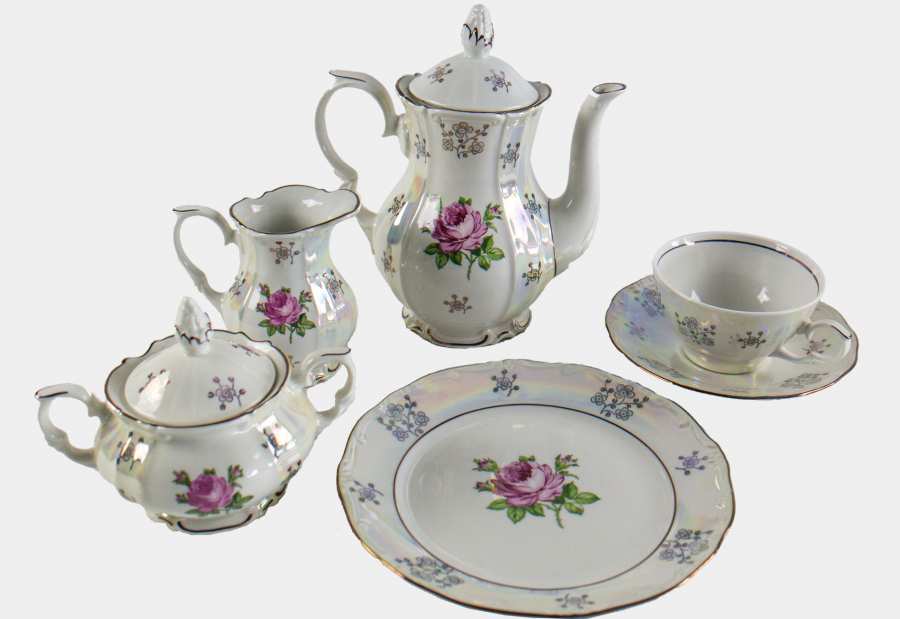
Fig.: Mother-of-pearl coloured coffee service from VEB Kombinat Feinkeramik Kahla, around 1985.
The Office for Industrial Design
In 1972, the Office for Industrial Mould Design (ger. Amt für industrielle Formgestaltung) began its work in Berlin. The state authority was responsible for the planning, management and monitoring of industrial mould design in the GDR. Department 4000 also covered the areas of glass and ceramics. In addition to ornamental decoration, important design criteria included the usability and durability of the porcelain. The fact that this balancing act was successful is demonstrated by the incredible variety of catering tableware produced, which above all had to fulfil the criteria of practical stacking and stability. The crockery of the famous Centrum department stores', the Mitropa or the Palace of the Republic (ger. Palast der Republik) served as a model for this.
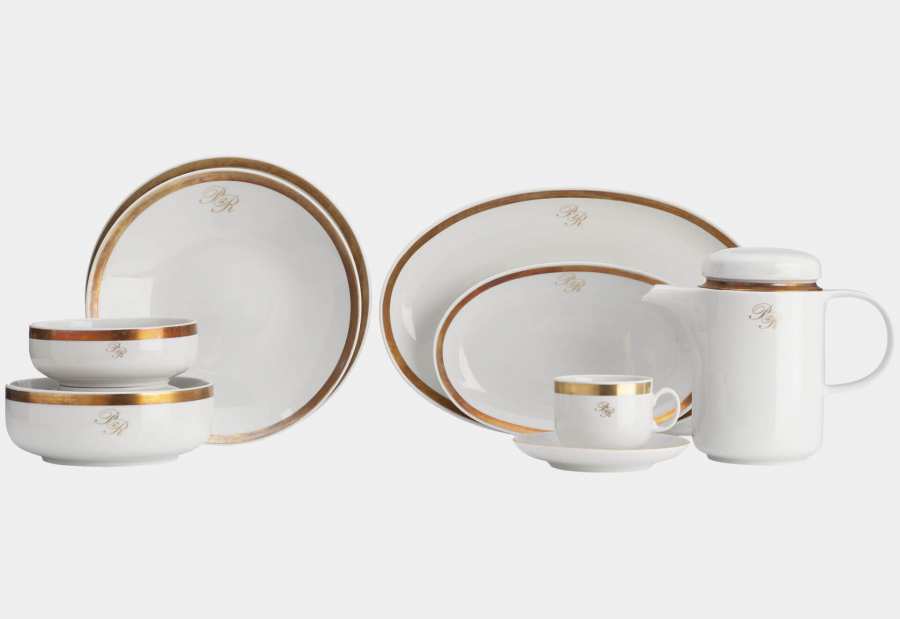
Fig.: Service from the Palace of the Republic by the manufacturer Henneberg Porzellan.
Porcelain from the Palace of the Republic
Completed in 1976, the Palace of the Republic had a total of nine catering areas spread over three levels. Two porcelain factories from Thuringia in particular covered the large demand for crockery: VEB Porzellanfabrik Henneberg (Graf von Henneberg) in Ilmenau and VEB Porzellanfabrik Kahla from the town of the same name. The decor with the typical »PdR« logo was monochrome in the colours red, green, orange/brown, (cobalt) blue, black and, of course, gold, although the latter was only issued on special occasions.
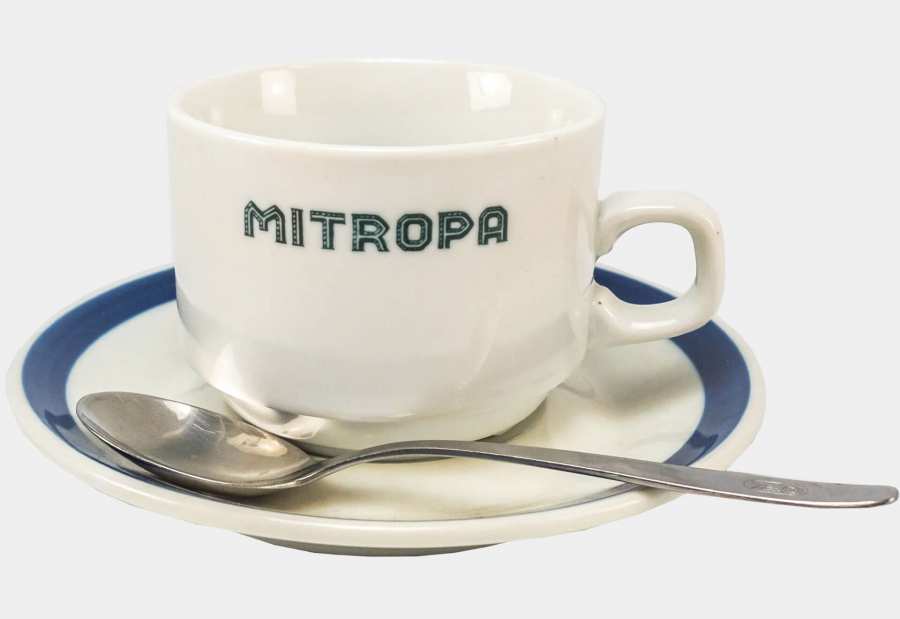
Fig.: Coffee service of the railway station and service station catering company MITROPA of VEB Porzellankombinat Colditz.
The Mitropa porcelain
The Mitteleuropäische Schlafwagen- und Speisewagen-Aktien-Gesellschaft (eng. Mid-European Sleeping Car and Dining Car Share Company), or Mitropa for short, is primarily associated with the »Rationell« dinnerware service, which was developed in 1969/70 by product designers Margarete Jahn and Erich Müller and was initially distributed by the VEB Vereinigte Porzellanwerke Colditz. Their design won a gold medal for good design at the Leipzig Trade Fair in 1970. At the beginning of the 1970s, the service was then used not only on Deutsche Reichsbahn (DR) trains but also in restaurants, factory and school canteens, hospitals and hotels. The Office for Industrial Design revised the original designs for Mitropa as early as 1972 and the standard tableware was given the logo with the blue, red and green »M« and a stylised wagon wheel that is still familiar today.
The Centrum Warenhaus department stores' chain, a subsidiary of the GDR's HO trade organisation, was also equipped with the »Rationell« tableware service from the 1970s. The VEB Porzellanfabrik Henneberg took over production, as production in Colditz was working to capacity.
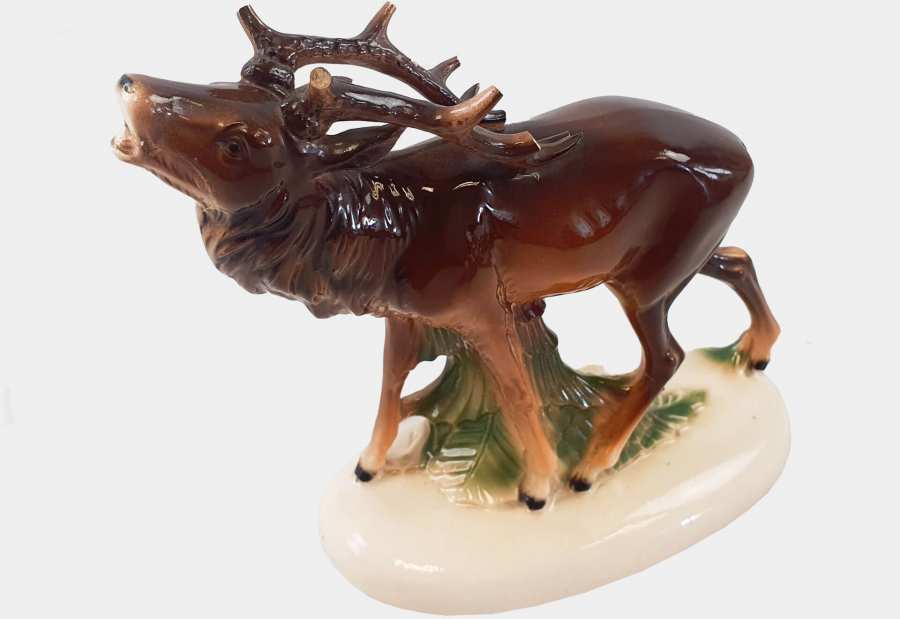
Fig.: Porcelain statuette in the shape of a roaring stag from the Sitzendorf porcelain manufactory.
Porcelain from the GDR today
Meissen, Kahla or Henneberg - porcelain from the GDR is still widely used and popular with collectors even after German reunification, and not just in the new federal states. Still appreciated for its quality and appealing design, and often associated with fond memories of social gatherings and special events, it can still be found throughout Germany today.
